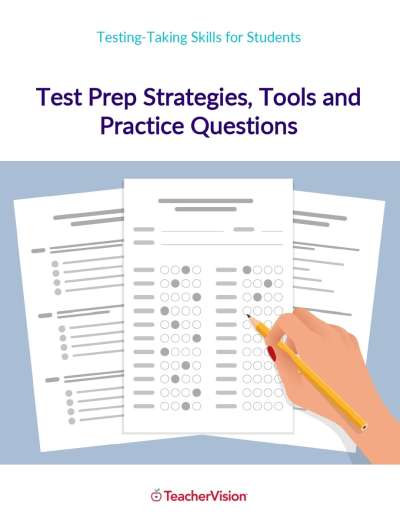Math Problem Solving: Make a Table
In this introductory guide, we will explore the Make a Table math strategy, a valuable tool for solving problems by organizing information in a logical format.
This problem-solving strategy encourages students to identify patterns and relationships within data. We’ll explain the strategy using an example and explain how it can be used effectively in mathematical problem-solving.

What is the Make a Table Math Strategy?
Making a table is a math problem-solving strategy that students can use to solve word problems by writing information in a more organized format.
Example of a problem that can be solved by making a table:
Juanita checked a book out of the library, and it is now 7 days overdue. If a book is 1 day overdue, the fine is 10¢, 2 days overdue, 20¢, 3 days overdue, 30¢, and so on. How much is her fine?
Why is the Make a Table Math Strategy Important?
This problem-solving strategy allows students to discover relationships and patterns among data. It encourages students to organize information logically and to look critically at the data to find patterns and develop a solution.
How to Make a Table to Solve a Math Problem
To help you learn to teach the Make a Table Math strategy, we will use the following word problem as an example:
How many hours will a car traveling at 65 miles per hour take to catch up with a car traveling at 55 miles per hour if the slower car starts one hour before the faster car?
Step 1: Understand the Problem
Demonstrate that the first step is understanding the problem. This involves identifying the key pieces of information needed to find the answer. This may require students to read the problem several times or put the problem into their own words.
In this problem, students need to understand that there is a slower car going 55 miles per hour and a faster car going 65 miles per hour. The slower car starts one hour before the faster car. Students need to find how many hours it will take the faster car to catch up to the slower car.
Step 2: Choose a Strategy
Because there are three sets of data to organize, you should use the Make a Table strategy. Generally, if there is data associated with a certain category, it can be organized easily by making a table. This strategy also overlaps with the Find a Pattern strategy because it is often easier to find a pattern when the data is organized in a table.
Step 3: Solve the Problem
Make a table to organize the data. For this example, create a row for the slower car, a row for the faster car, and a column for each hour. Find the distance traveled during each hour by looking at the distances listed in each column.
The distance of the faster car was more than the distance of the slower car in hour seven. The faster car took six hours to catch up to the slower car.
| Hour | 1 | 2 | 3 | 4 | 5 | 6 | 7 |
| Slower Car | 55 | 110 | 165 | 220 | 275 | 330 | 385 |
| Faster Car | 0 | 65 | 130 | 195 | 260 | 325 | 390 |
Step 3: Check Your Work
Reread the problem to be sure the question was answered.
Did you find the number of hours it took for the faster car to catch up?
Yes, it took 6 hours.
Check the math to be sure it is correct.
55 x 2 = 110, 55 x 3 = 165, 55 x 4 = 220, 55 x 5 = 275, 55 x 6 = 330, 55 x 7 = 385
65 x 2 = 130, 65 x 3 = 195, 65 x 4 = 260, 65 x 5 = 325, 65 x 6 = 390
Determine if the best strategy was chosen for this problem or if there was another way to solve the problem.
Making a table was a good way to solve this problem.
Step 4: Explain Your Work
The last step is explaining how you found the answer. Demonstrate how to write a paragraph describing the steps you took and how you made decisions throughout the process.
I set up a table for the miles each car had gone during each hour. I kept adding columns until the faster car caught up to the slower car. At the end of the seventh hour, the faster car had gone 390 miles, which was more than the distance traveled by the slower car, 385 miles. Because the faster car didn't start traveling in the first hour, it traveled for six hours.
Step 5: Guided Practice
Have students try solving the following problem using the strategy Make a Table.
The printer in the media center can print 1 page every 30 seconds. The printer in the office can print 4 pages every 30 seconds. If both printers are printing, how many pages will the office printer have printed by the time the media center printer prints 5 pages?
Have students work in pairs, groups, or individually to solve this problem. They should be able to tell or write about how they found the answer and justify their reasoning.
How Can You Stretch Students’ Thinking?
The Make a Table math strategy can be stretched when combined with other strategies, such as looking for patterns or drawing a picture. By combining this strategy with others, students can analyze the data that is given to find more complex relationships.











